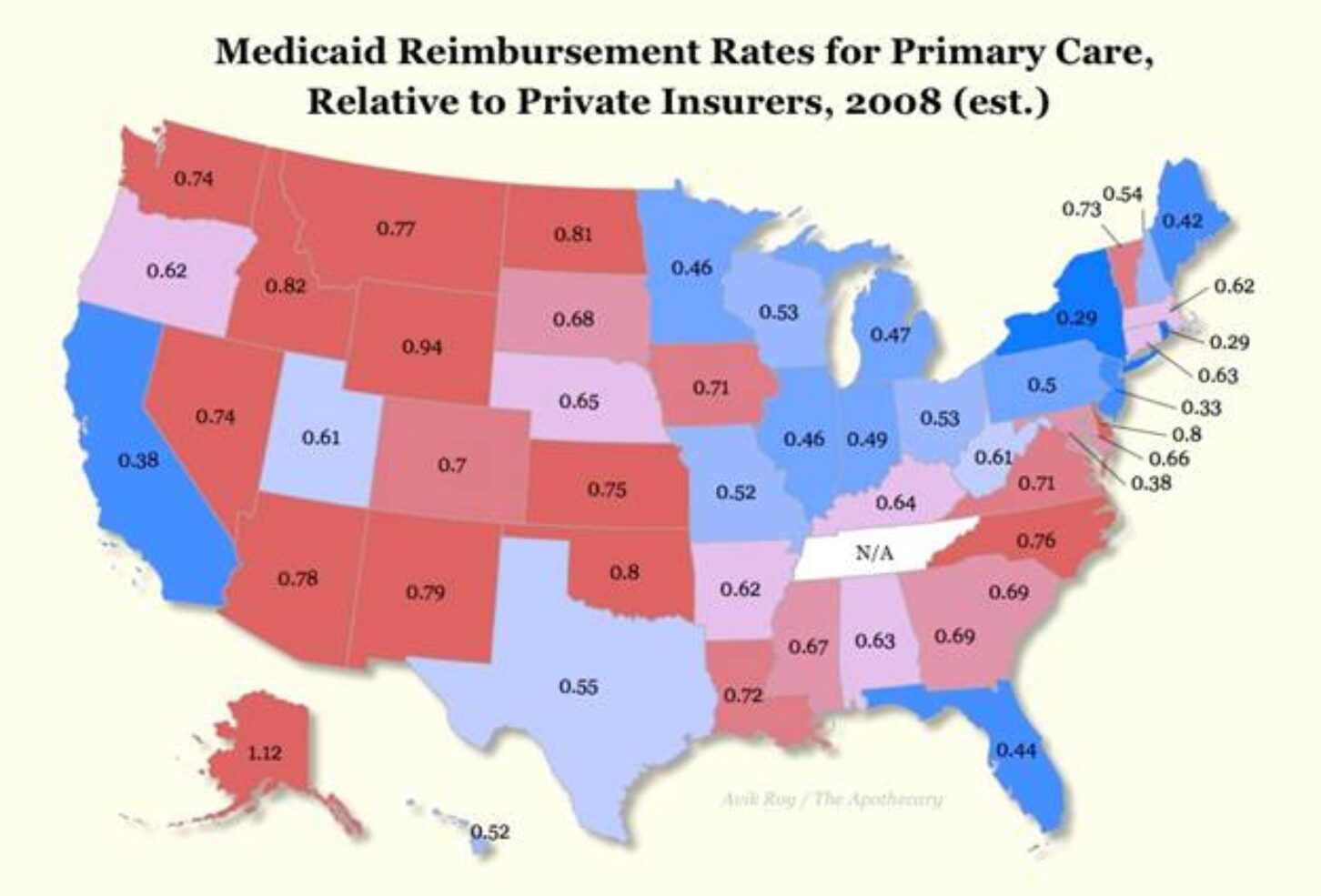
By Grace-Marie Turner
One of the most tragic failings of ObamaCare is that it will make it harder for many of the most vulnerable citizens – patients with no option but Medicaid – to get care.

Medicaid is cumbersome, complex, and wasteful – already the worst health care program in the country. But rather than making changes to improve or modernize this program designed to finance care for the poor, the Obama administration is trying to convince states to add at least 16 million more people to Medicaid, including families making more than $30,000 a year.
That means the poorest and most vulnerable patients enrolled today will be competing with millions of new Medicaid patients for appointments to see a limited number of physicians. Those who have the greatest need and nowhere else to go are likely to have the hardest time getting care.
In its ruling in June, the Supreme Court made it optional for states to expand Medicaid to cover new enrollees. Even with generous federal funding, several states have said flatly they cannot afford the expansion, which would cost states at least $118 billion through 2023.
They are resisting not only because of budget concerns but also because this large Medicaid expansion could have catastrophic effects on those who provide society’s health care safety net.
(Editor’s Note: Grace-Marie Turner will discuss the U.S. Supreme Court health care law decision impact at the 2012 Georgia Public Policy Forum on Friday, September 21 at the W Hotel in midtown Atlanta. Click here for more information.)
First, there simply aren’t enough doctors to handle this influx of new patients. Given Medicaid’s abysmally-low payment rates, private doctors won’t be able to afford to take much more of the exploding caseload.
A recent article in Health Affairs found that nearly one-third (31%) of physicians are not accepting any new Medicaid patients. Sandra Decker, an economist with the Centers for Disease Control and Prevention, used a survey of 4,326 office-based physicians from across the country to find that just under 70 percent said they were accepting new Medicaid patients. That number was significantly lower than those accepting privately-insured subscribers (81 percent) or Medicare patients (83 percent).
The problem is particularly acute in states that have the lowest reimbursement rates for physicians.
Health policy analyst Avik Roy of the Manhattan Institute has produced a map showing the reimbursement rates for Medicaid relative to private insurance.
(Grace-Marie Turner is President of the Galen Institute in Alexandria, Virginia. Click here to continue reading on the Galen Institute website)
By Grace-Marie Turner
One of the most tragic failings of ObamaCare is that it will make it harder for many of the most vulnerable citizens – patients with no option but Medicaid – to get care.
Medicaid is cumbersome, complex, and wasteful – already the worst health care program in the country. But rather than making changes to improve or modernize this program designed to finance care for the poor, the Obama administration is trying to convince states to add at least 16 million more people to Medicaid, including families making more than $30,000 a year.
That means the poorest and most vulnerable patients enrolled today will be competing with millions of new Medicaid patients for appointments to see a limited number of physicians. Those who have the greatest need and nowhere else to go are likely to have the hardest time getting care.
In its ruling in June, the Supreme Court made it optional for states to expand Medicaid to cover new enrollees. Even with generous federal funding, several states have said flatly they cannot afford the expansion, which would cost states at least $118 billion through 2023.
They are resisting not only because of budget concerns but also because this large Medicaid expansion could have catastrophic effects on those who provide society’s health care safety net.
(Editor’s Note: Grace-Marie Turner will discuss the U.S. Supreme Court health care law decision impact at the 2012 Georgia Public Policy Forum on Friday, September 21 at the W Hotel in midtown Atlanta. Click here for more information.)
First, there simply aren’t enough doctors to handle this influx of new patients. Given Medicaid’s abysmally-low payment rates, private doctors won’t be able to afford to take much more of the exploding caseload.
A recent article in Health Affairs found that nearly one-third (31%) of physicians are not accepting any new Medicaid patients. Sandra Decker, an economist with the Centers for Disease Control and Prevention, used a survey of 4,326 office-based physicians from across the country to find that just under 70 percent said they were accepting new Medicaid patients. That number was significantly lower than those accepting privately-insured subscribers (81 percent) or Medicare patients (83 percent).
The problem is particularly acute in states that have the lowest reimbursement rates for physicians.
Health policy analyst Avik Roy of the Manhattan Institute has produced a map showing the reimbursement rates for Medicaid relative to private insurance.
Grace-Marie Turner is President of the Galen Institute in Alexandria, Virginia. Click here to continue reading on the Galen Institute website.
